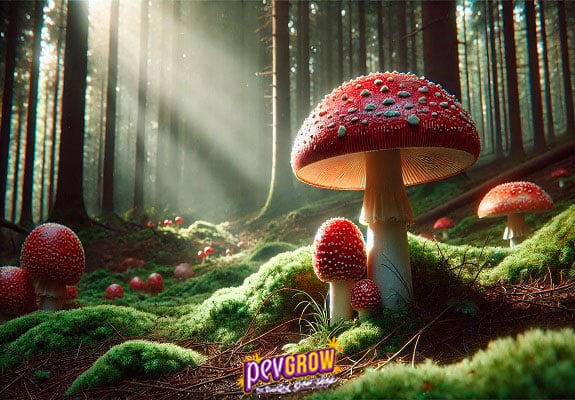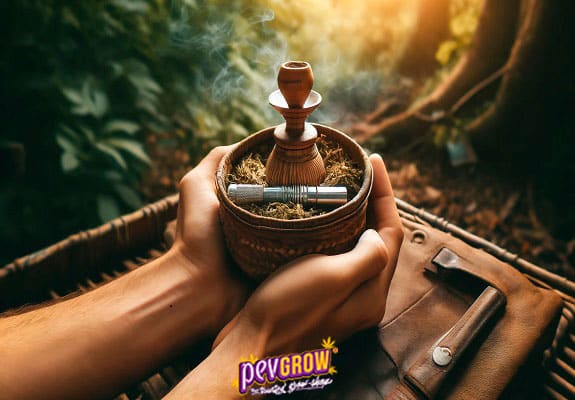

04-09-2020 10:00:36 - Updated: 4 September, 2020
Although there are several species of cactus that contain mescaline, without a doubt the most famous in the world are Peyote and San Pedro, both from the American continent. These vegetables were totally unknown to almost everyone on the planet until very recently, when their use began to spread thanks to some published reports on their effects.
In fact, a few years ago the classification of many of these vegetables was changed, and those that are now labelled Echinopsis were previously known as Trichocerus, but what is so special about that substance and why did it arouse so much expectation? In this post you can read all the information about mescaline, its history, use and effects. But if you are interested in knowing which are the best mescaline cactus in the world, just keep reading this…
⭐ Top 10 Best Cactus with Mescaline
1- Lophophora Williamsii
Better known as Peyote, it has earned a place at the top of our ranking for the millions of revealing experiences it has provided to hundreds of thousands of users over the centuries. It is the cactus species that has the highest concentration of mescaline by weight, up to 6%, and also contains other alkaloids such as peyotine, which seems to enhance the psychoactive effect. Their growth is very slow and the natives call them buttons because of their bulky shape, and their worldwide popularization came after publications such as “The doors of perception” by Aldous Huxley or “Las enseñanzas de Don Juan” by Carlos Castañeda.
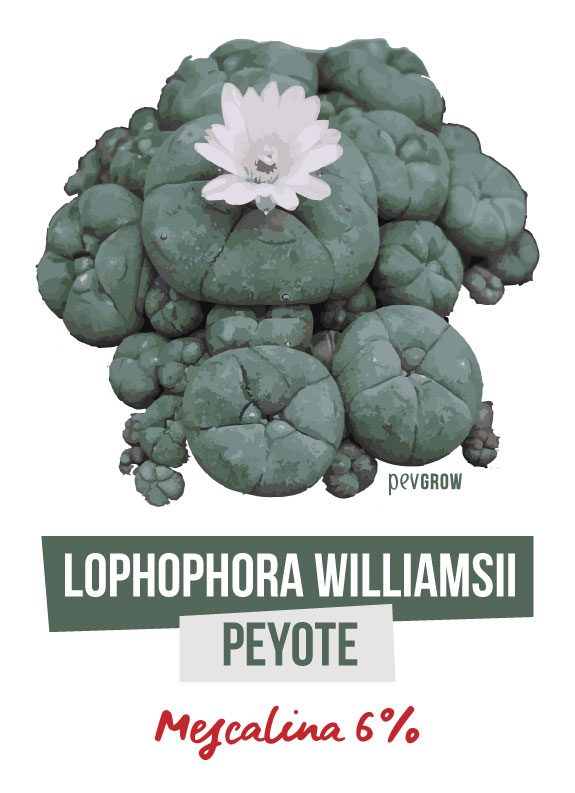
2- Echinopsis Pachanoi
The mythical San Pedro, this one is much easier to find than Peyote, since a few decades ago it was imported massively and now it can be found in an ornamental way in many public places in Europe or America. Very powerful too, in its dry form it contains from 1% to 4% of mescaline, although it does not reach the extreme of Lophophora Williamsii in terms of intensity. It is elongated in shape, with several ribs, and contains long, rigid spikes. The growth of the San Pedro is very fast, for this reason its foot is used to implant other cactus of slow development.
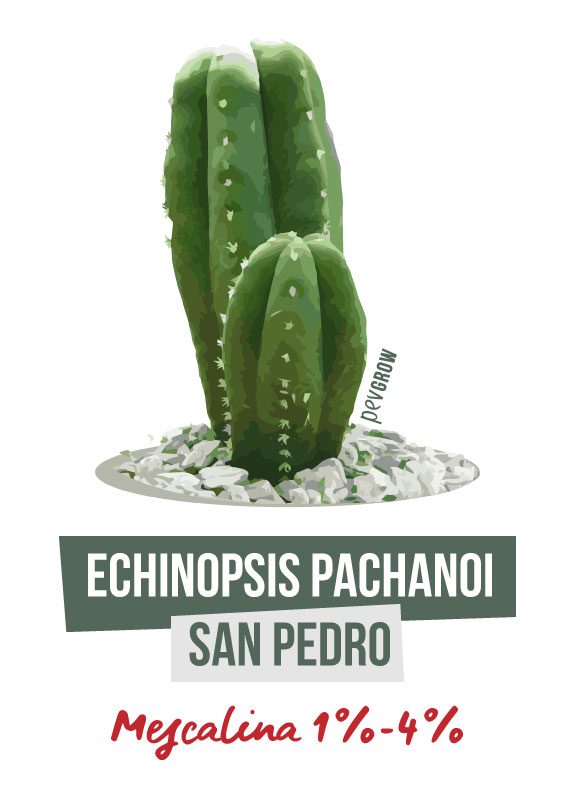
3- Lophophora Decipiens
Until a few years ago it was thought that the Decipiens was a subspecies of the Lophophora Williamsii, but in a recent classification of these cactuses they were separated. Decipiens is larger in all respects, its flower can be pink or magenta, although in some individuals it can be white as well. But the biggest difference between them lies in the speed of growth, much greater in Decipiens than in Williamsii. This variety of Peyote has been less studied, but it can have more than 3% of mescaline once dry.
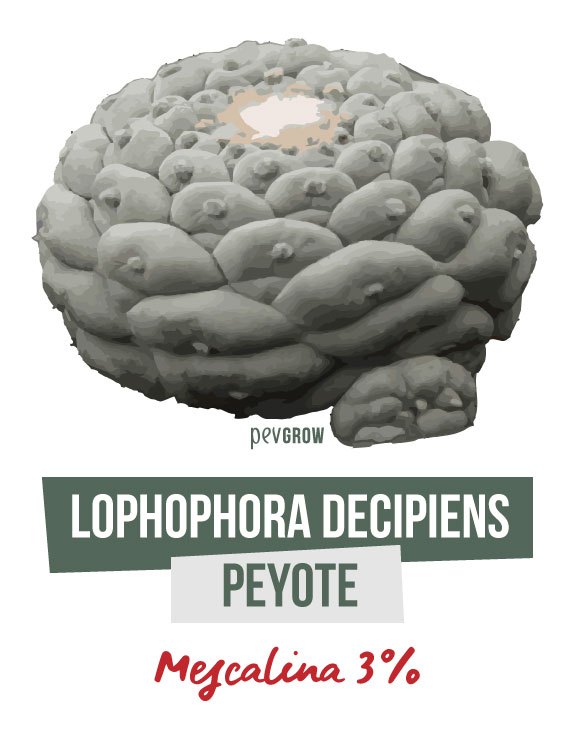
4- Bolivian Torch
As its name indicates, this cactus grows in the mountains of Bolivia, although its real name is Echinopsis Lageniformis, and is very similar in appearance to San Pedro Pachanoi. It is very resistant, something that makes its cultivation much easier. If you treat it well, it can reach up to 5 meters, but its mescaline content is lower than the previous ones, around 0.56% once dry.
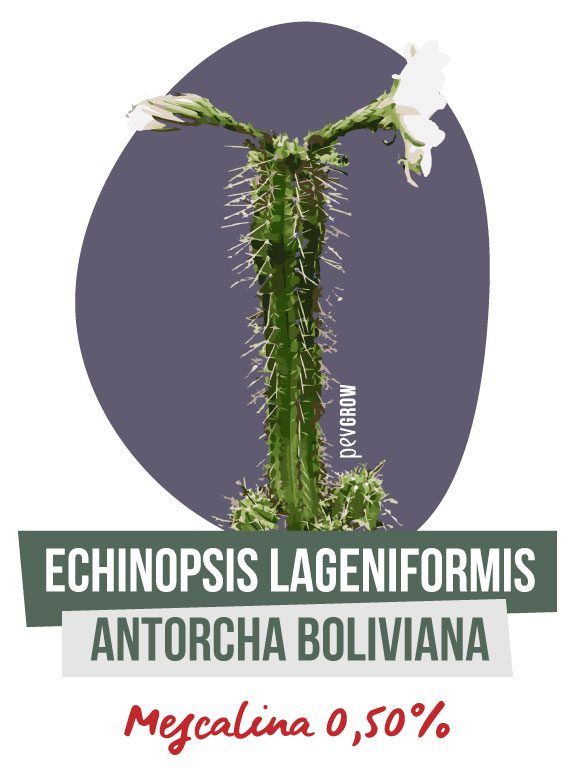
5- Peruvian Torch
Another variety similar to Pachanoi, also known as Echinopsis Peruviana, and grows in the Andes Mountains, both in Peru and Ecuador. It grows very fast too, columnar, and can reach up to 6 meters. It doesn’t require much care, special soil for cactus and little watering except in summer. It has an intense psychedelic effect similar to Peyote, although its mescaline concentration is lower, up to 0.81% once dry.
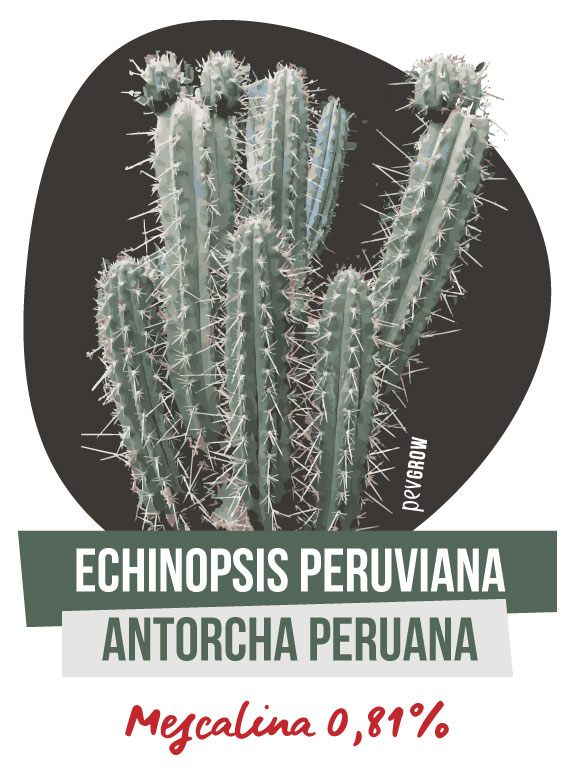
6- Echinopsis Puquiensis
Related to Echinopsis Peruvians, this cactus is also from Peru, from the region of Puquia. It is a great unknown to many, who often confuse it either with Echinopsis Peruvians or with the Pachanoi, which it really resembles more in appearance. Although its mescaline content can be between 0.11% and 0.50% of its dry weight, its effect is quite powerful too but it does not usually produce many visions.
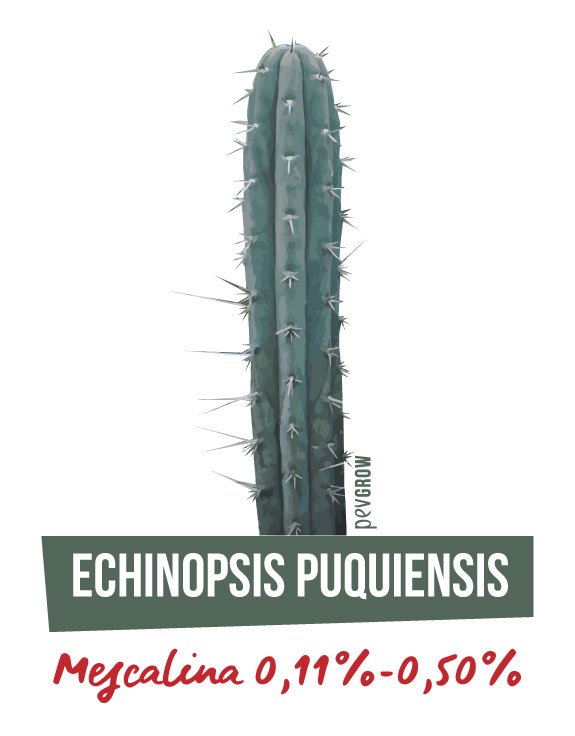
7- Echinopsis Cuzcoensis
A smaller species of San Pedro, it can reach 3 meters, but with a robust stem up to 15 cm in diameter. As an adult it can have up to 7 ribs, with spikes up to 3 cm long. Its mescaline concentration is between 0.14% and 0.22%, and the effect is very similar to that of the Pachanoi, reaching gradually and not as psychedelic as that of the Peyote.
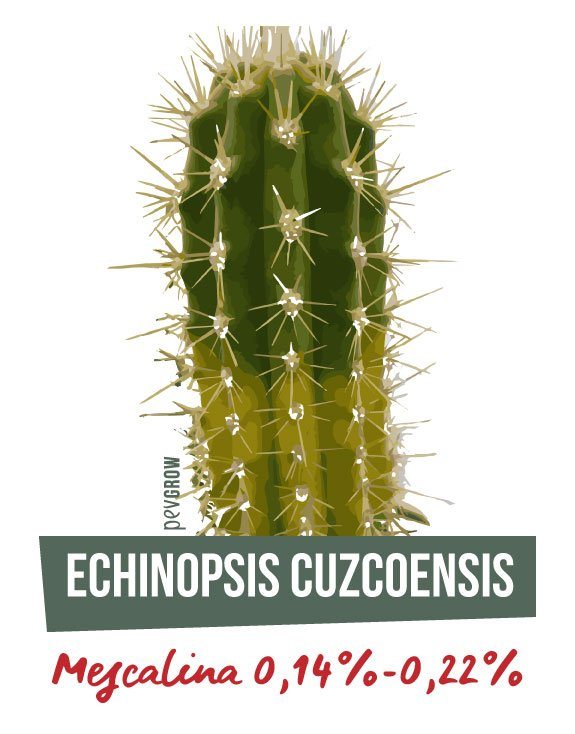
8- Echinopsis Bridgesii
It grows in different areas of Bolivia, and is quite similar in appearance to Cuzcoensis. It is quite unknown also to the general public, but the kind of effect is very pleasant too, very similar to the famous San Pedro Pachanoi, although with a much lower percentage of mescaline.
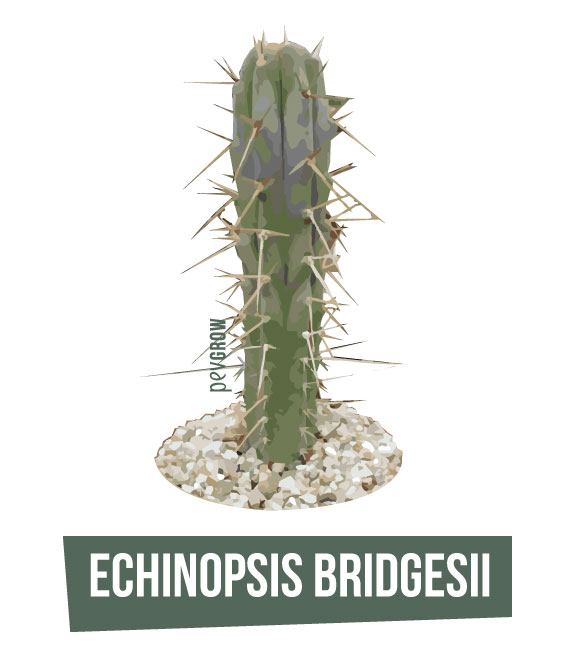
9- Echinopsis Schoenii
It is a rather rare species in general, especially for growing needs. Very similar in appearance to Echinopsis Santaensis, its mescaline content is identical to that of Cuzcoensis, i.e. between 0.14% and 0.22% which can also grow in the same area as Cuzcoensis, in the south of Peru, so it is possible that they are related.
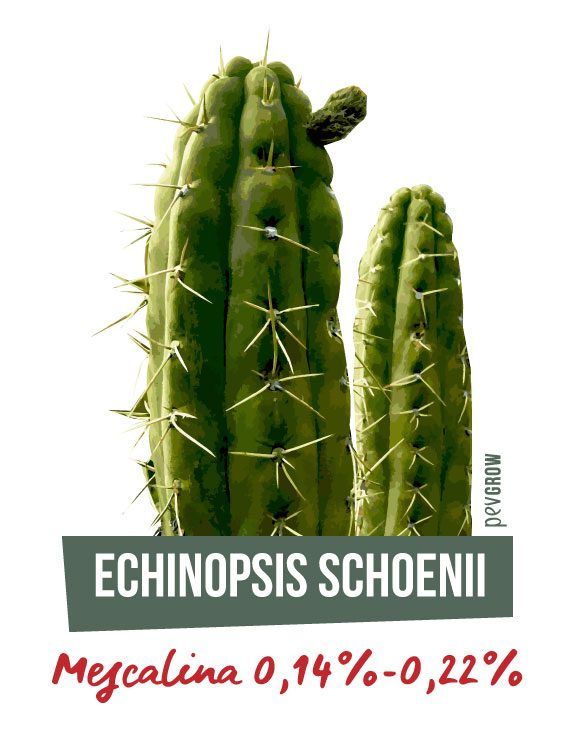
10-Echinopsis Macrogona
It is a variety or variation of Peruvians, very similar in many ways, so much so that you need to be an expert to be able to differentiate them easily. It grows in a columnar shape, can measure up to 3 meters and its diameter rarely exceeds 5 cm. Its cultivation is really easy, it hardly asks for water except in the hottest months.
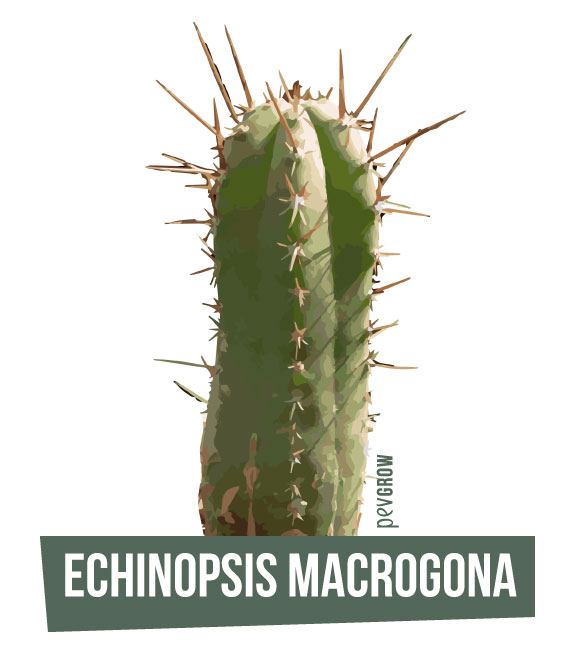
⛳ Conclusion
There are many types of cactuses that contain the mescaline alkaloid in different concentrations. As with cannabis and THC, mescaline does not act on its own in our bodies. The effect of a variety of cannabis is marked by the combination of different cannabinoids, terpenes and other compounds, and with these cactuses it’s the same, so you don’t have to focus only on the content of this alkaloid.
There is still a lot to discover about these special vegetables and at Pevgrow we will be awaiting all the news to keep you as informed as possible. If you liked this post, please do us a favour and share it with others. We thank you in advance.


